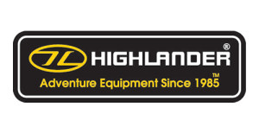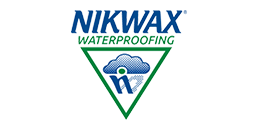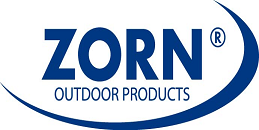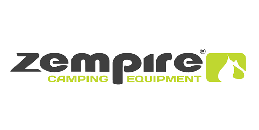Condensation Explained
Condensation in tents/awnings can happen to the most experienced campers/caravaners. Have you woken up with moisture on the inside of your flysheet, or a pool of water in your tent/awning? You would be forgiven for thinking that your tent /awning has leaked during the night, but what has probably occurred is condensation, and it can put a real dampener on your camping trip.
Coated materials are designed to prevent rain coming in and in doing so it prevents moisture getting out, just like a walking/rain jacket would do. Therefore we cannot make condensation disappear.
Has my tent /awning leaked, or is it condensation?
If you have been unlucky enough to find water in your tent/awning, it is very unlikely that your tent/awning has leaked. Modern tents and awnings are made to the highest specification using quality materials and components. From tough, waterproof fabrics to strong stitching techniques and sealed seams and is designed to keep the weather out.
How much condensation can form in a tent/awning?
Did you know that 1 person can produce up to 1 pint of condensation per night? So let’s say you have 5 people in a tent, that’s potentially 5 pints of water inside your tent! Other likely sources of moisture are wet shoes, clothes, dogs, cooking, even the air itself! Warm air can hold more moisture than cold air, as the temperature falls at night the more moisture is released into the air. Fact, even without occupants, the air in a six man tent holds approximately 1 pint of water!
What causes condensation in tents/awnings?
Air temperature in the tent can become warm and humid from people, heaters and a lack of ventilation. When the warm air inside the tent hits the relatively cool fabric of the tent, the moisture condenses into liquid form.
Do all tents/awnings suffer from condensation?
Tents/awnings designed with good ventilation and an inner tent will fair best. In certain weather conditions, the design of any tent /awning can be overwhelmed by moisture. For example, if it is a cold night and there is no breeze to circulate the warm, moist air out of the tent, condensation is likely to form.
If the outside temperature is much cooler than that inside the tent, then the cooling of the air in the beams is quite quick. The warm, humid air inside the tent then condensates onto the area of the beams inside the tent/awning. This moisture can then appear as water droplets on the AirBeams and in some cases may create pools of water at the base of the AirBeams. If the prevailing conditions are particularly prone to condensation, remove items from around the base of beams.
What weather conditions can make condensation worse?
Condensation can be made worse when the air outside the tent is significantly cooler than inside, especially after a warm, humid day. On days where there is a substantial temperature drop, it can be challenging to prevent tent condensation forming.
Rainy conditions can also increase the chances of condensation occurring, often leading to the appearance of a leaking tent. Rain water on the outside of the tent, or rain water evaporating off the outer surface of the tent/awning causes the temperature of the fabric to decrease, leading to more rapid condensation as the air inside the tent comes into contact with it.
My tent/awning is wet from condensation, what should I do?
Wiping the walls with a towel or cloth is a good way to remove condensation from the surface and stop any drips. On polycotton, avoid pressing against the sides of the tents as this can cause water to seep through.
If you are staying in one location, remove all wet items from the tent and dry them so that they don’t create more moisture the next night. Dry and ventilate your tent as best as you can.
Tents can be slow to dry on cold mornings. If you are trekking, you may wish to pack your tent and dry it out properly in the midday sun.
How can you prevent condensation in your tent?
Here are our top tips for a dry night!
-
Ventilate your tent!
The more ventilation the better. Reduce the humidity of your tent by promoting a good airflow. Examine your tent for low and high venting options and open them to let the moist air flow out. If the weather conditions permit, leave the upper and lower sections of the door open, mesh sections can be kept fully zipped. If appropriate, also ensure vents at the rear of the tent are fully open. Make sure the vents are not obstructed by bags, or sleeping bodies.
-
Store wet stuff outside
Towels, boots, waterproofs, swimming trunks, sweaty friends… keep that soggy, wet stuff out of the tent/awning.
-
Don’t touch the sides
If pressure is applied to the tent walls of a polycotton tent, water may seep through. Keep bags and other items away from tent walls and be mindful that condensation can collect at the foot of AirBeams.
-
Never cook inside
Primarily for safety, but cooking also releases large amounts of moisture into the air. Remember that extractor fan in the kitchen at home?
-
Turn heaters off
Further warming the air inside the tent will increase water vapour in the air as warm air can support more moisture (our techy guys talk about dew plus the warmer the tent is the more moisture will be released into the tent through evaporation and perspiration. Instead of heating the tent, warm yourself up with the right clothing and good sleeping bags.
-
Pitch in a spot that gets a natural breeze
Sheltered areas are more prone to generating condensation. Pitch your tent so that vents are lined up with the prevailing winds.
-
Don’t pitch too close to water
Rivers and lakes can increase humidity. Pitching your tent a little further away from water sources can help reduce condensation.
-
Take spare towels
In some weather conditions condensation is difficult to avoid. Reduce it using the steps above and pack a spare towel to simply wipe it away.
Condensation is not covered by any manufacturer’s warranty – we and you cannot be responsible for the weather.





















































































